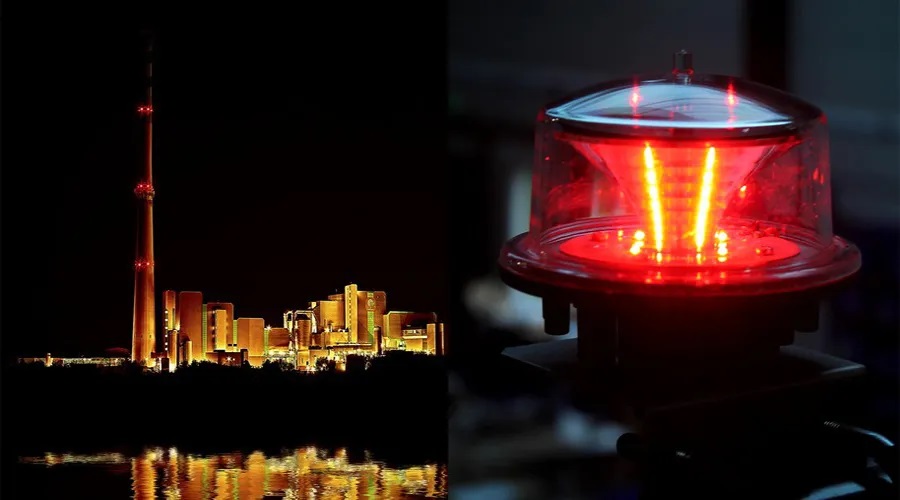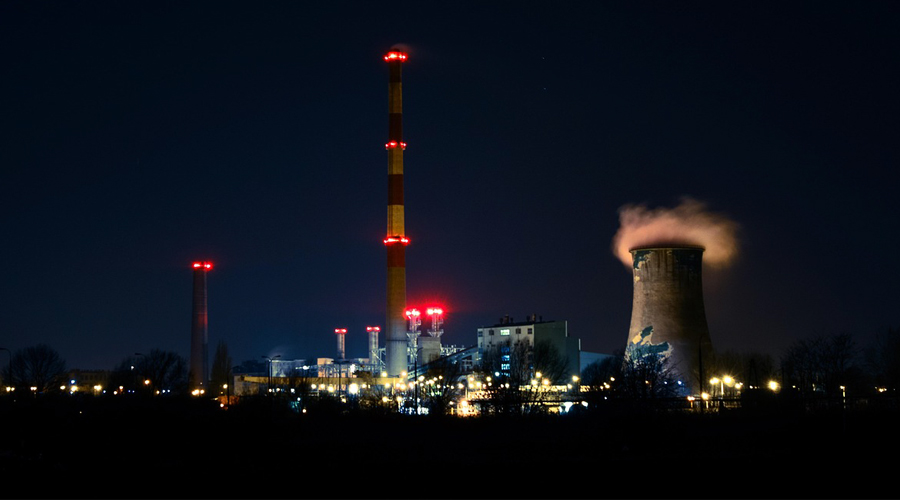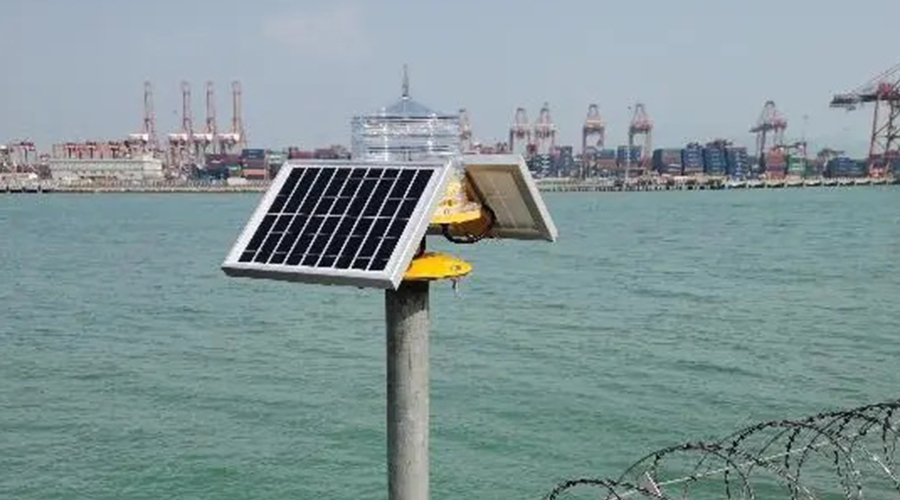Aircraft warning lights or solar aviation obstruction lights are lights specifically designed to illuminate tall buildings and any other objects that may interfere with air traffic.
Used to increase the visibility of structures or fixed obstacles that may conflict with the safe navigation of aircraft. Obstacle lighting warning lights are usually installed on towers, buildings or even fences where aircraft may fly at low altitudes.
Characteristics of Aviation Obstruction Lights
The type of lighting required depends on the height of the obstacle, and these requirements are usually governed by ICAO Annex 14 and FAA standards.
To ensure maximum visibility, these solar-powered high-altitude obstacle warning lights usually use one or more high-intensity strobe lights or LED devices to ensure that pilots can see it from miles away from the obstacle.
There are three types of LED obstruction lights: Low intensity, medium intensity and high intensity, equipped with warning lights of corresponding intensity, color, constant light or flashing mode according to different devices and altitudes.
Comparison
Aircraft Warning Lights VS Solar Aviation Obstruction Lights
These two types of high-altitude warning lights are similar in function, both of which serve to alert aircraft operators and pilots to the height and outline of obstacles and serve as a warning. They mainly differ in the power supply method and some technical characteristics.
- Aviation Obstruction Warning Light
1) Power Supply Mode:
LED aviation lights usually rely on traditional power supply, such as mains or battery packs, and require an external power supply to maintain their operation.
2) Technical Features:
Aviation obstruction lights may have a variety of light intensities and flash frequencies to adapt to buildings and facilities at different heights. They are usually designed to be waterproof, impact-resistant and corrosion-resistant to ensure stable operation in harsh environments.
- Solar High Altitude Obstacle Warning Light
1) Power Supply Mode:
Solar aviation obstruction warning lights are powered by solar panels, which convert solar energy into electrical energy through solar panels and store it in batteries.
It automatically charges during the day and automatically discharges to work and emit light at night. This power supply method does not require an external power supply and is more environmentally friendly and energy-saving.
2) Technical Features:
Due to the use of solar power, solar aviation obstruction warning lights avoid the pollution caused by traditional power supply to the environment and achieve energy conservation and emission reduction.
In addition, the solar light has a built-in photosensitive sensor that can automatically switch on and off according to the ambient light, saving human resources.
At the same time, it also has overcharge and over-discharge protection functions, which can protect the battery life and extend the service life of the equipment.
It adopts advanced control circuit and LED light source, and has the characteristics of strong anti-interference ability and good stability. It can still work normally under severe weather conditions such as strong wind, rain and snow, ensuring aviation safety.
Easy installation: solar aircraft warning light generally adopt wireless installation method, without laying cables, reducing installation costs. Its easy to carry and install.
Aviation beacon lights and solar aviation obstacle warning lights are similar in function, but there are differences in power supply methods and technical characteristics. Both have been widely used in the field of modern aviation safety warning.
Aircraft warning lights / solar aviation obstruction lights can be used to enhance the visibility of high-rise buildings, towers, wind turbines, telecommunication facilities and bridges, so that low-flying aircraft can see and be warned. You can choose according to your needs.






